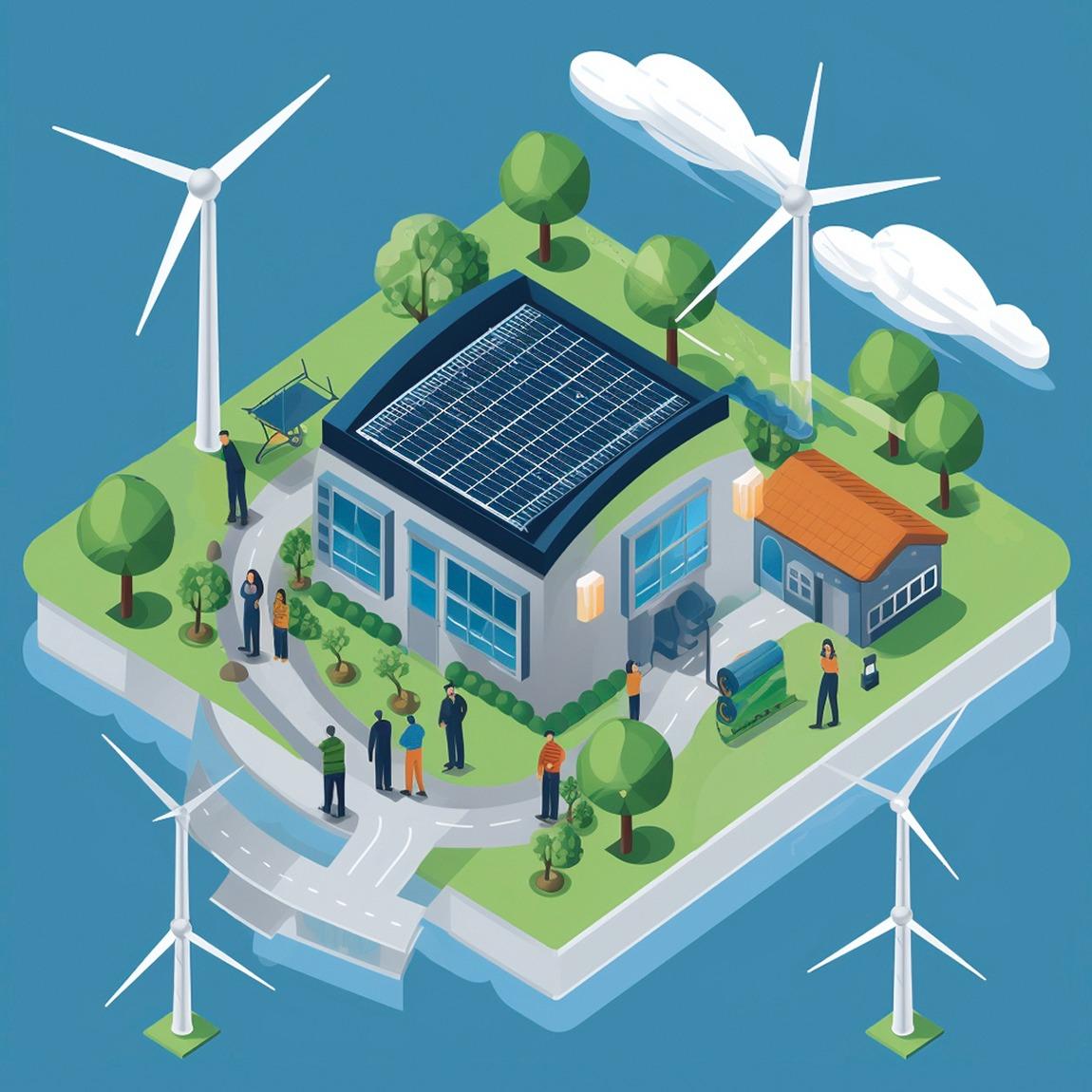China’s renewable energy push critical for advancing global sustainable development
 (WANG XIAOYING / CHINA DAILY)
(WANG XIAOYING / CHINA DAILY)
China has experienced a tremendous surge in green sectors in recent years, including solar and wind power, batteries, electric vehicles and more. Rapid deployment of renewable energy and increased renewable energy generation could soon overtake the increase in total energy consumption in the country. If the trend continues, China’s greenhouse gas emissions may peak well before 2030. This provides some hope after what has been a difficult year for many countries.
On top of geopolitical tensions and sluggish economic recovery, the year 2023 has been confirmed to be the warmest year on record, resulting in extreme weather on all continents. Beijing was hit by floods in the summer, and the Amazon rainforest experienced its worst droughts ever recorded. The United States and European countries were hit by deadly heat waves in July. Canada faced record-breaking wildfires, over double the previous burned area. Heavy rains caused dams to collapse in Libya, killing thousands of people.
For global climate action, the most important trend is the transition from fossil fuel to renewable energy. In turn, China’s energy transition is one of the most important in the world, as the nation accounts for about 30 percent of global greenhouse gas emissions.
READ MORE: Global investors eyeing opportunities in China's green transition
Solar power has emerged as the most important renewable energy source. So for global climate action, one of the most important trends to watch is the installation of solar power in China, and the manufacturing rate of new solar panels. China is estimated to have installed about 230 gigawatts of solar power in 2023, with its solar panel manufacturing capacity likely to have exceeded 600 GW, both far exceeding all expectations. For reference, 230 GW is more than twice the cumulative solar power ever installed in the US (113 GW), and more than what the world installed in 2022 (192 GW).
The energy transition in Europe also continues unabated. Amid shocks in the supply of fossil fuels, European countries have stepped up energy saving measures and increased their pace of renewable energy deployment. As a result, combined with the warm weather, consumption of coal and gas in Europe saw a huge annual drop of about 20 percent in 2023.
If the world’s emissions have indeed hit a peak and started to decline, that would mark a key turning point. However, unfortunately that does not mean global temperatures will come down right away. In fact, temperatures are rapidly increasing, and will continue to increase until the world achieves net zero emissions. So we face the prospect of much more serious impacts from climate change in the coming decades, making it all the more urgent to reduce emissions now.
At the 28th session of the Conference of Parties of the United Nations Framework Convention on Climate Change, or COP28, which took place in the United Arab Emirates in December, the world agreed to triple renewable energy capacity by 2030. According to a recent report by the International Energy Agency, this means the world will need to install about 1,000 GW of renewable energy every year between now and 2030.
To achieve this ambitious goal, the world must cooperate on ramping up the manufacturing and deployment of renewable energy technologies, as well as the technologies and systems which are needed to utilize them, such as more flexible power grids and power storage solutions.
Broadly speaking, it looks like this is happening. For example, at the third Belt and Road Forum for International Cooperation in October last year, an Indonesian state-owned power company secured smart grid, storage and solar panel manufacturing deals worth $54 billion with Chinese partners. It could be the backbone of Indonesia’s energy transition. Organizations including ClientEarth, the Belt and Road International Green Development Coalition and the Institute for Essential Services Reform in Indonesia helped advance the cooperation. At the forum, the Chinese government also launched the Green Investment and Financing Partnership, a special facility for financing green overseas investments.
ALSO READ: COP28 president-designate lauds China's role in green transition
Renewable energy provides much greater energy independence than fossil fuels, because being reliant on fossil fuel imports is very risky — if you cannot secure supply, the lights go off. By contrast, solar panels or wind turbines require no fuel to keep producing energy, so every solar panel and wind turbine installed provides greater energy independence.
Indonesia is partnering with the world’s leading solar companies to produce solar panels locally, greatly benefiting the Indonesian economy and facilitating transfer of technology and production capabilities.
If other countries with strong manufacturing capabilities do the same, it will help solve many of the world’s most pressing problems, stimulating economies, accelerating the global energy transition, decreasing the impacts of climate change, reducing the risk of geopolitical tensions, and enhancing energy security across the world.
The author is regional director for Asia at ClientEarth and special adviser of the China Council for International Cooperation on Environment and Development. The author contributed this article to China Watch, a think tank powered by China Daily.
The views do not necessarily reflect those of China Daily.


